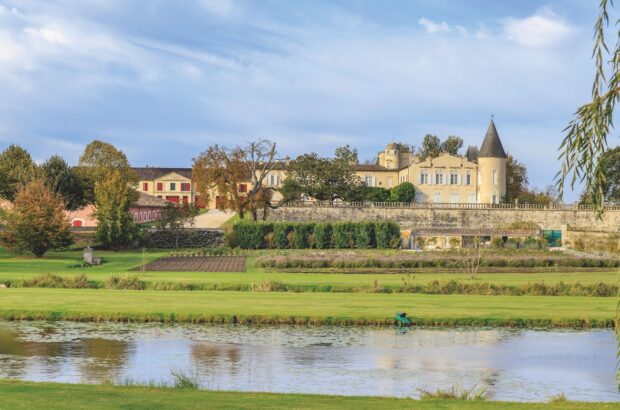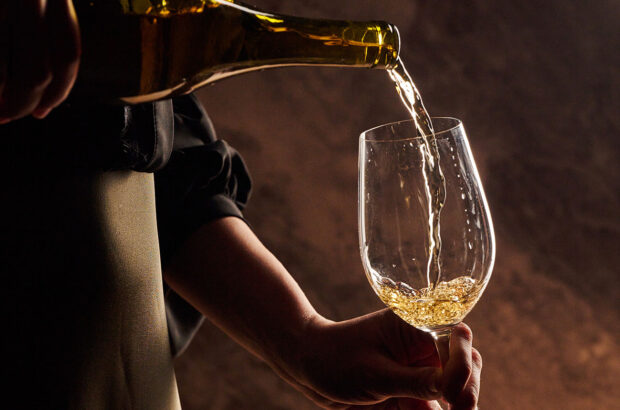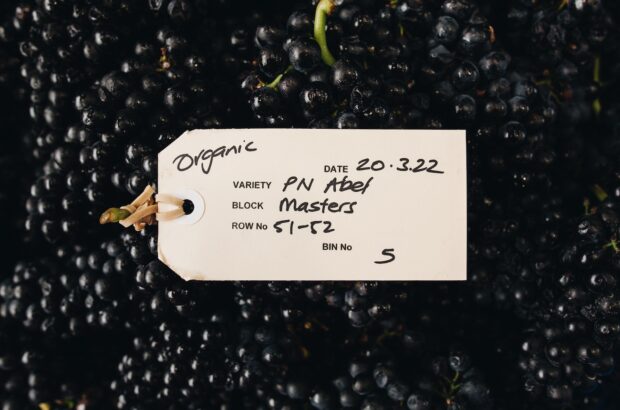Abruzzo’s landscape is astonishing: a backdrop of statuesque mountains soaring to nearly 3,000m above sea level and capped with snow for six months of the year, with river valleys running down to the Adriatic coast through a band of hills where cool breezes and dramatic night-day temperature swings provide perfect conditions for fragrant, expressive wines.
The Montepulciano d’Abruzzo variety dominates the region’s production with generous, fruity and elegant, or powerful and complex purple-toned wines. Cerasuolo d’Abruzzo, the intense deep cherry-coloured rosé made with the same grape, is the locals’ go-to wine for its incredible versatility and charm – perfect with dishes such as brodetto (fish stew), arrosticini (the lamb skewers that have achieved cult status), charcuterie and Pecorino cheese.
Abruzzo’s white wine scene is focusing ever more on bold, herby Pecorino (the grape, not the cheese!) alongside Trebbiano d’Abruzzo, Passerina and the less common Cococciola and Montonico. The passion and drive for quality of the region’s winemakers is palpable, aided by a dynamic consorzio.
Northern Abruzzo, home to the Colline Teramane DOCG, resembles a drawing, with neat rows of hills backed by the Gran Sasso d’Italia massif. This idyllic scenery is vivid at Emidio Pepe, one of Abruzzo’s legendary wineries, which also offers accommodation for the season after mid-April. A pioneer of extreme ageing, Pepe began in 1964 with less than a hectare under vine (now some 17ha). Intervention is minimal: handpicked grapes are pressed by foot-treading (join in if you’re there at harvest time); and ageing can last for 20 years or more.

The tasting experience at Cantina Mazzarosa
Nearby, on the coast at Roseto degli Abruzzi, lies the Mazzarosa winery, built by 19th-century senator Giuseppe Devincenzi, who introduced new agricultural methods and grape varieties to the region. The estate has preserved its own clones for its Pecorino white, and its red Vere Novo is the result of an experiment during Covid lockdown, made with partial whole-bunch fermentation giving an intense, velvety Montepulciano (the inaugural 2020 vintage won Platinum in the 2022 Decanter World Wine Awards).
In the same area, winemaker Antonio Lamona at Vini La Quercia is one of only a few growing the Montonico grape, which thrives in mountain conditions and is celebrated with a festival in Bisenti that takes place over the first weekend in October. Lamona makes an apple-fresh still version.
In his consultant role, Lamona helped set up another Colline Teramane winery, Abbazia di Propezzano, which, like most Abruzzo wineries, also produces olive oil from centuries-old trees. Each local area has its traditional varieties and there is an olive oil museum at the charming hill town Loreto Aprutino. Also welcoming visitors is nearby Ciavolich, a long-established family-run winery with farmhouse accommodation and whirlpool hot-tubs in a secret garden.
Another attractive winery that offers accommodation, as well as a range of summertime events in the vineyards, is Tenuta Tre Gemme. In an especially scenic position surrounded by vines, offering open views panning between the ever-present mountains and the sea, it’s run by two sisters who made a major career change to concentrate on the family estate, making highly enjoyable wines, including a fresh, agile Cerasuolo.
New heights

Pasetti, southeast of Ofena
In Abruzzo’s southern province of Chieti, where the majority of the region’s wine is made, Tenuta I Fauri (offers accommodation), run by Luigi di Camillo and his sister Valentina, are upholding traditions while experimenting with styles; their excellent wines include a characterful pét-nat Pecorino. The Pecorino grape had virtually disappeared a few decades ago and its resurgence in the mid-1990s is largely thanks to Cataldi Madonna, where it was first bottled in 1996 from vines at 320m-440m in Ofena, Aquila province; the microclimate’s extreme temperature swings make for exceptionally fragrant and complex wines.
Southeast of Ofena, Domenico ‘Mimmo’ Pasetti took over his family winery in 1999 (offering accommodation) and is now growing Pecorino up to a remarkable 1,000m elevation and more near Pescosansonesco. Never tiring of experimenting, Pasetti had the foresight to move away from the coast and replant vineyards at higher altitudes.
Masciarelli (offers accommodation) also has vines at Ofena, as well as other plots around the region. Founded by the late Gianni Masciarelli in 1981, its most celebrated wine is its minty, chocolatey Villa Gemma Montepulciano Riserva. Gianni’s widow Marina Cvetic now runs the winery and the stunning Castello di Semivicoli.
Near the sea

A cooking class at Fontefico
Back on the coast, the stretch of southern Abruzzo between Ortona and the attractive town of Vasto is called Costa dei Trabocchi, after the numerous picturesque wooden fishing platforms that stretch over the sea, many of which now host seasonal restaurants. Located less than 5km inland from the nearby Punta Aderci nature reserve, Fontefico, run by brothers Emanuele and Nicola Altieri, offers cookery classes and meals paired with their wines, which include a lemony Trebbiano d’Abruzzo.
Just inland from Ortona, Abruzzo’s second, tiny DOCG area surrounds the village of Tollo. Benefiting from cool mountain breezes, the Tullum DOCG (alternatively known as Terre Tollesi) produces particularly expressive Pecorino, Passerina and Montepulciano. Here, in the grounds of the Feudo Antico (offers accommodation), archaeological excavations are underway to unearth a Roman villa with ancient winemaking equipment discovered during the replanting of a long-abandoned vineyard. Alongside the Tullum DOCG range, the winery makes an exquisite Pecorino in partnership with chef Niko Romito from vines at his restaurant, the Michelin three-star Casadonna Reale, above 800m in Castel di Sangro.
Your Abruzzo address book
Accommodation
Simple, stylish rooms with hill views create a wonderful sense of calm at this spacious B&B on the family-run Tenuta I Fauri wine estate near Villamagna.
Authentic historic atmosphere at the Masciarelli winery’s beautifully restored castle, surrounded by vines.
Homely and relaxing B&B at the heart of the tiny Podere Colle San Massimo organic wine estate near Giulianova.
Restaurants
Intimate Michelin one-star dining rooms, bedrooms and a tasting cellar in stylishly restructured locations around the hilltop village of Montepagano.
Da Bacone
Run by a family involved in fishing, this is the go-to place on Pescara’s seafront for excellent seafood and an extensive choice of wines.
This Slow Food-approved, family-run countryside restaurant in northern Abruzzo offers a menu that’s a roll-call of traditional specialities.
Things to do
Enoteca Regionale d’Abruzzo
Abruzzo’s regional wine cellar is the place to visit for a personalised tasting, to buy a bottle, or simply to enjoy a glass with a platter of local produce. See Facebook
Harvest time – lend a hand/foot
Several wineries offer hands-on grape harvest experiences with lunch among the vines. Fontefico organises harvest activities for children; at Emidio Pepe you can help tread the grapes.
Slow travel
Paths for cyclists and walkers run alongside much of Abruzzo’s coastline, including the 42km Via Verde along the scenic Costa dei Trabocchi. Among the inland routes, the Ciclovia Acquaviva passes the Abbazia di Propezzano and La Quercia wineries.












